Cooking from a recipe doesn't have to take all night. These 10 chef-approved tips show you how to speed up steps, cut back on prep, and get dinner on the table faster. With strategies pulled from my professional kitchen experience, you'll learn how to make recipes work harder for you without losing flavor.
Table of Contents
Jump to:
- So What's the Big Deal?!
- 1. Lock Down Your Cutting Board
- 2. Start with a Sharp Blade
- 3. Use a Hanging Trash Can (or Scrap Bowl)
- 4. Do a 60‑Second Recipe & Ingredient Scan
- 5. Three MVP Tools Under $30
- 6. Strategic Grocery Shortcuts
- 7. Clean as You Go
- 8. Hands‑Free Timers
- 9. Master the Power‑Hour Batch Prep
- 10. Let Kitchen Assistant Appliances Do the Work
- More Cooking Tips and Tutorials
- Frequently Asked Questions
- Leave a Comment or Ask a Question
So What's the Big Deal?!
Weeknight cooking shouldn't feel like a televised speed round, but between deadlines, homework duty, and the dog begging for scraps, it does. Every extra minute you spend hunting for a knife or chasing a sliding cutting board pushes you closer to "let's just order takeout."

The ten shortcuts below reclaim that time. They improve knife safety, reduce cleanup, and get dinner on the table minus the frenzy. Also, check out 10 Essential Time-Saving Kitchen Tools Every Home Cook Needs.
1. Lock Down Your Cutting Board
Why it's slow:
A wobbly board turns every slice into a safety drill.
Quick fix:
Slip a damp towel underneath or use the Carlisle Saf-T-Grip Cutting Board Mat (16"x10") for a secure, no-slide prep surface that doesn't bunch up or wear down like paper towels.

Sometimes, when prepping multiple ingredients and not wanting my banana to taste like onions, I'll place a damp cloth on my antimicrobial wooden cutting board.

Then, place a color-coded plastic cutting board on top. This will create friction and prevent the board from slipping.

Keeping your board from moving shouldn't be the only thing; remember to keep it clean, sanitized, and splinter-free. Check out what the USDA has to say about Cutting Board Food Safety. This is why I recommend color-cutting boards to prevent cross-contamination.
2. Start with a Sharp Blade
Why it's slow:
Dull knives slip, crush delicate ingredients, and drag out chopping time.
Quick fix:
Hone your knife before every cooking session and sharpen it every 3 to 6 months, depending on use.
If you're unsure where to start, check out Epicurious 101: The Best Way to Sharpen & Clean Knives (And The Worst) on YouTube. It's a solid breakdown of proper technique and what to avoid by Chef Frank.

A sharp knife is not just faster, it's safer. The clean cuts reduce bruising and keep your ingredients (and fingers) intact. And the main reason why I love using my PAUDIN knife set, super sharp and easy to maintain. You can also check out Prep Smarter: Knives, Boards & Cutting Tools I Use Every Week for more info.
3. Use a Hanging Trash Can (or Scrap Bowl)
Why it's slow:
Five trips to the trash can = five minutes lost (and plenty of broken flow).
Quick fix:
Set up a designated trash spot right where you prep. I personally use a hanging trash can that clips onto any cabinet door or drawer. It's small but mighty. It fits my plastic grocery bags perfectly, and when I'm prepping raw meat, I can tie it up and toss it immediately to prevent any lingering odors.
For those short on cabinet space, a simple countertop scrap bowl (like a mixing bowl or compost bin) works just as well. Just sweep in peels, scraps, and stems as you go, then dump once at the end.

Less movement. Less mess. More time saved. The one I use is out of stock. But the next best thing is the Tiyafuro 2.4 Gallon Kitchen Hanging Small Trash Can with Lid. Why do I recommend it? The lid slides to the front, creating a no-contact trash can.
4. Do a 60‑Second Recipe & Ingredient Scan
Why it's slow:
Hidden steps like "marinate overnight" or "chill for 1 hour" can completely derail your dinner plans if spotted too late.
Quick fix:
Before you turn on the stove, scan the recipe for key prep verbs: marinate, chill, soak, rest, roast, then pull all ingredients onto a sheet pan or tray. This simple "ingredient landing zone" saves you from digging through the pantry mid-sauté.
I also like to group ingredients by steps. That way, I can move through the recipe without stopping to reread instructions or grab forgotten items.

This quick check can be the difference between a 30-minute dinner and a last-minute takeout call. Learn more about Mise en Place 101 here.
5. Three MVP Tools Under $30
Why it's slow:
Chopping vegetables by hand takes time, scraping them into a pan is messy, and waiting for water to boil can stall dinner before it even starts.
Quick fix:
Stock your kitchen with three budget-friendly tools that cut prep in half and clean-up to a minimum.
- Mandoline Slicer - Creates uniform, paper-thin slices of cucumbers, potatoes, or carrots in seconds. Ideal for salads and gratins when presentation and speed matter. Try the classic Benriner's Mandoline Slicer.
- Bench Scraper - Moves a full cutting board of chopped vegetables into the pan in one clean swipe and doubles as a dough and surface cleaner. Chef'n Pastry Bench Scraper, Set of 3 - Great multi-purpose combo in one purchase. Very useful, I wish I had this.
- Electric Kettle - Boils a liter of water in under two minutes, so pasta, rice, or blanched vegetables start cooking faster. Try the Cosori Electric Kettle for under $30

Never used a mandoline before? Then you gotta check out my Japanese Mandoline blog post with videos and pictures on this beloved tool. And remember, these three tools, all under $30, are small investments that deliver big time savings.
6. Strategic Grocery Shortcuts
Why it's slow:
Washing, peeling, chopping, and cooking every single component from scratch adds 15-30 minutes to your dinner routine.
Quick fix:
Choose a couple of store-bought helpers each week that save you the most time without sacrificing quality.
- Rotisserie chicken - Shred it into soups, casseroles, tacos, or salads instead of cooking raw chicken from scratch.
- Frozen mirepoix or chopped onions - Cuts out the time it takes to dice aromatics while still giving you the same flavor foundation.
- Pre-washed salad greens - No rinsing or drying needed. Toss straight into a bowl for a quick side or use as a base for bowls and wraps.

15+ minutes off prep. Keep two of these shortcuts in your fridge or freezer at all times. They're inexpensive compared to takeout, and they shave precious minutes off prep during the week. Learn more at 10 Grocery Shortcuts for Quicker Prep.
7. Clean as You Go
Why it's slow:
Letting dishes, knives, and pans pile up until the end turns cleanup into a second job after dinner.
Quick fix:
Fill the sink with hot, soapy water before you start cooking. As you finish with cutting boards, utensils, and bowls, give them a quick rinse and drop them in. Or rinse and drop into your dishwasher.
Future-you will thank present-you when the kitchen is already halfway clean by the time you sit down to eat. Use downtime like simmering or roasting to wipe counters, stack dishes, and reset your station.

Bonus Tip: I have a dishwasher, so I rinse and drop in, but I still use a tub of soapy water for my utensils that are not dishwasher safe. I recommend the 2.4 Gal(9L) Collapsible Dish Basin with Drain Plug (I bought two). When all done, dry it, collapse it, and store it in your cabinet.
8. Hands‑Free Timers
Why it's slow:
Stopping to wash your hands, dry them, and punch buttons on a timer interrupts your cooking flow and risks overcooking.
Quick fix:
Use voice-activated timers through a smart speaker, phone, or smartwatch. Say, "Hey Google, set a 10-minute timer for pasta," without missing a beat. You can also set multiple alarms, one for pasta, another for garlic bread, so nothing slips through the cracks.

Such a lifesaver and my favorite: Don't just request the timer, also label it with the food item. This way, when the timer goes off, you know which one. This small shift takes the guesswork out of timing and keeps you focused on the food, not the clock. Plus, use a roast, etc., use an oven thermometer with alarms, I recommend the ThermoWorks Square DOT®. It's even rated number one by America's Test Kitchen.
9. Master the Power‑Hour Batch Prep
Why it's slow:
Starting every meal from scratch means you're repeating the same chopping, measuring, and cooking steps over and over.
Quick fix:
Dedicate one focused "power hour" each week to prepping the basics that will speed up meals for days.
Here's a simple plan to get started:
- Dice a bag of onions, mince a head of garlic, and slice two bell peppers
- Blitz a jar of epis (aka green seasoning) or mirepoix and portion it into half-cup containers
- Cook a pot of rice, quinoa, or lentils
- Roast two sheet pans of vegetables to mix into bowls, wraps, and pastas

Why Batch Prep? By front-loading the work, you jump into meals mid-recipe instead of starting from zero. Batch prep builds flexibility, reduces stress, and makes weeknight cooking feel effortless. Start with these Batch‑Prep Aromatics & Staples.
10. Let Kitchen Assistant Appliances Do the Work
Why It's Slow:
Relying only on the stovetop or oven means you're juggling limited burners and long cooking times. Soups simmer for hours, sides crowd the oven, and you end up babysitting pots when you could be focusing on other tasks.
Quick Fix:
Shift the load to time-saving appliances. An Instant Pot turns all-day braises into under an hour, an air fryer crisps veggies or proteins in half the time of the oven, and a slow cooker frees a burner by handling soups or stews while you're busy elsewhere.
These tools act like reliable kitchen assistants, taking tasks off your plate so you can get dinner on the table faster.

Chef Tip: When planning a menu, match the appliance to the job let the slow cooker handle the long simmer, the air fryer tackle the crispy sides, and the Instant Pot cook the grains or beans. You'll free up stove space and finish the meal with less stress.
More Cooking Tips and Tutorials
- Best Food Audiobooks for Chefs & Home Cooks
- Winter Seasonal Produce Guide: What's In Season
- What Is HACCP and Why Every Home Cook Should Care About It
- Holiday Kitchen Safety Tips: How to Cook, Serve, and Store
Frequently Asked Questions
Yes, most of the strategies, like prepping ingredients ahead or using kitchen appliances, can be applied to almost any recipe to shorten the process.
Absolutely. In fact, beginners benefit the most because these shortcuts simplify steps that usually feel overwhelming, like chopping, simmering, or multitasking.
Not if used correctly. In many cases, tools like air fryers or Instant Pots enhance flavor by locking in moisture or creating crisp textures faster.
Look for cues like long cooking times, multiple prep steps, or anything that requires constant stirring. That's where time-saving techniques or appliances make the biggest difference.
Definitely, the real help happens when you combine them, for example, prepping veggies ahead, letting the slow cooker handle the main dish, and using the air fryer for sides.


Chef Maika Frederic
Chef and Educator
Haitian-American chef and educator Maika Frederic blends bold flavors with approachable recipes. With a background in both professional kitchens, classrooms, and children therapy as a trained chef, former teacher and technician she brings a thoughtful, inclusive touch to every dish. Through her platform, Just Maika Cooking, she shares diverse meals and practical tips to empower home cooks of all ages and levels.
Leave a Comment or Ask a Question
Which of these time-saving tips are you most excited to try in your own kitchen? Drop a comment below, I'd love to hear your favorite shortcuts or answer any questions you have!


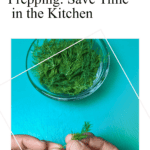


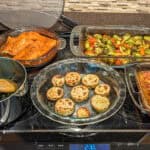

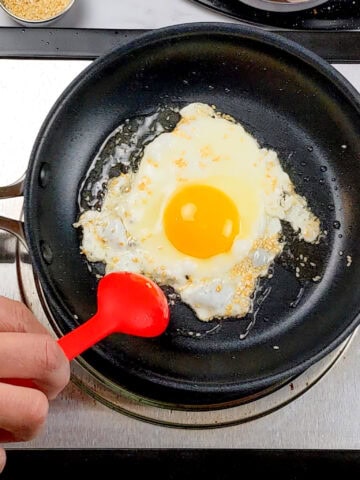

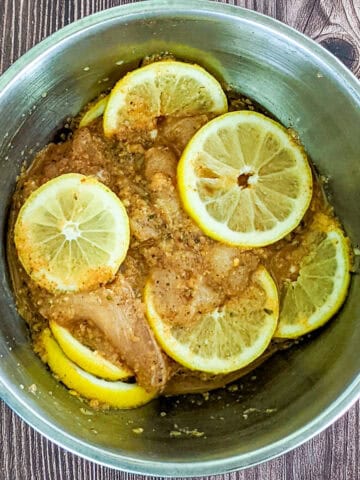
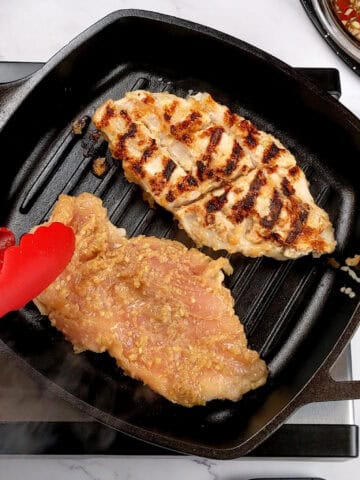
Leave a Reply